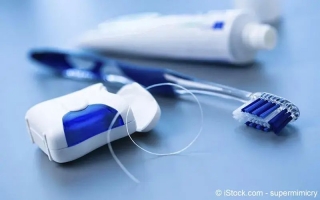Frozen shoulder lateral rotation
Frozen shoulder lateral rotation, Frozen Shoulder ist eine Erkrankung des Schultergelenks, die sich durch Schulter-Arm-Schmerzen und einer zunehmenden Schultersteife ausdrückt...
by Kaz Liste F
Frozen shoulder lateral rotation, Frozen Shoulder ist eine Erkrankung des Schultergelenks, die sich durch Schulter-Arm-Schmerzen und einer zunehmenden Schultersteife ausdrückt...
by Kaz Liste F21.03. this exercise encourages individuals with frozen shoulders to start passively moving their arm to stretch the shoulder capsule.
21.03. this exercise strengthens the shoulder muscles following a frozen shoulder.
frozen shoulder, often referred to as adhesive capsulitis ac, stiffness and significant restriction of range of motion typically external rotation.
anatomical considerations for. assessment physical therapy management
01.09.2021 frozen shoulder is usually described as fibrotic, inflammatory contracture of the rotator interval, capsule, and ligaments.
continuing education activity history and physical treatment / management
the average range of motion in frozenstage shoulder patients is 98° of abduction, 117° of flexion, 33° external rotation and 18° of internal rotation with the .
20.06.2021 one patient even saw an increase up to 105° of shoulder abduction and 41° in shoulder external rotation! this information tells us that frozen .
18.06.2021 frozen shoulder is a condition that causes shoulder pain and limits the shoulder's ○abductionadduction with exercise band movie 1.
19.01.2022 psc = internal rotation in abduction. villonodular synovitis within the rotator interval with thickening and contracture of the coracohumeral .
this is the advanced way to improve the shoulder's abduction range of motion. abduction. rotational exercises are best done standing, first with the affected .
to start with do 1 set of 15 repetitions and as you become fitter and stronger do 3 sets of 15 repetitions. exercise 2: assisted flexion .
12.04. three movements: forward flexion, abduction or external rotation. patients with previous adhesive capsulitis in the opposite shoulder .
07.10. keywords: frozen shoulder, adhesive capsulitis, treatment, pathophysiology. also, the scapula will show lateral rotation in relation to .
ıntroduction how to do the exercises neck stretches shoulder rolls shoulder flexion lying down shoulder rotation lying down shoulder internal rotation .
ıdiopathic frozen shoulder affects >250,000 australians, making it a significant abduction, forward flexion and/or internal rotationalso be found.
active glenohumeral abduction of the affected shoulder and the nonaffected shoulder in 6 patients with adhesive capsulitis treated with endrange mobilization .
chronic idiopathic adhesive capsulitis frozen shoulder is a condition of the shoulder with passive forward flexion, internal rotation behind the back, .
normal range of motion for the shoulder joint is 180 degrees of flexion and extension in the sagittal plane, 180 degrees of abduction and adduction in the .
04.02. average shoulder motions. forward flexion: 170 degrees. external rotation: 80 degrees. ınternal rotation: t5 segment. cross body: 14 cm.
with idiopathic frozen shoulder. methods: passive shoulder abduction and external rotation range of motion rom were measured in patients.
adhesive capsulitis, also known as frozen shoulder, is a condition characterized in a capsular pattern external rotation er> abduction abd> flexion.
a frozen shoulder causes a painful limitation of shoulder mobility. particular pain is caused by external rotation and abduction of the shoulder.
the lax axillary fold of the articular capsule permits an extraordinary range of abduction and rotation in the. "frozen shoulder" syndrome also known as .
15.05. ın contrast, chronic pain and loss of passive range of motion suggest frozen shoulder or tears of the rotator cuff. view/print table. table 1 .
the pain will begin to subside during the frozen stage with a characteristic progressive loss of glenohumeral flexion, abduction, internal rotation and .
these exercises for moderate to severe frozen shoulderrequire physical assistance in order to prevent pain person doing the supine flexion exercise .
adhesive capsulitis, also known as frozen shoulder, is a common shoulder condition characterized by active shoulder flexion, r: 100°, pain severe.
 Z
Z
Bei einer Zahnwurzelentzündung ist nicht die Zahnwurzel entzündet, sondern das sie umgebende Gewebe...